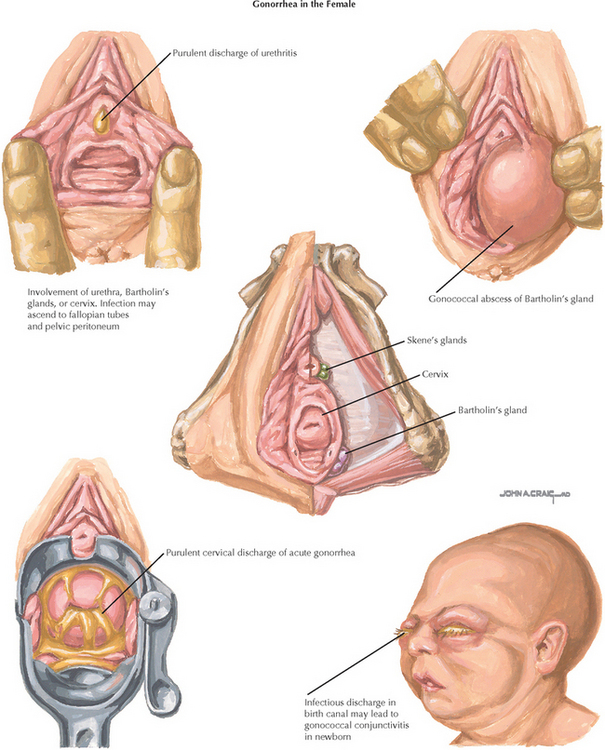Chapter 48 Sexually Transmitted Infections: Gonorrhea
INTRODUCTION
ETIOLOGY AND PATHOGENESIS
CLINICAL CHARACTERISTICS
DIAGNOSTIC APPROACH
Workup and Evaluation
MANAGEMENT AND THERAPY
Nonpharmacologic
Drug(s) of Choice
FOLLOW-UP
MISCELLANEOUS
Centers for Disease Control and Surveillance. Decreased susceptibility of Neisseria gonorrhoeae to fluoroquinolones—Ohio and Hawaii, 1992–1994. MMWR. 1994;43:325.
Golden MR, Whittington WL, Handsfield HH, et al. Effect of expedited treatment of sex partners on recurrent or persistent gonorrhea or chlamydial infection. N Engl J Med. 2005;352:676.
Lyss SB, Kamb ML, Peterman TA, et al. Chlamydia trachomatis among patients infected with and treated for Neisseria gonorrhoeae in sexually transmitted disease clinics in the United States. Ann Intern Med. 2003;139:178.
Phillips RS, Hanff PA, Wertheimer A, Aronson MD. Gonorrhea in women seen for routine gynecologic care: criteria for testing. Am J Med. 1988;85:177.
Ramus R, Mayfield J, Wendel G. Evaluation of the current CDC recommended treatment guidelines for gonorrhea in pregnancy. Am J Obstet Gynecol. 1996;174:409.
Centers for Disease Control and Prevention. Sexually transmitted disease surveillance, 2004. Atlanta, GA: U.S. Department of Health and Human Services, CDC, National Center for HIV, STD, and TB Prevention, 2005.
Centers for Disease Control and Prevention. Sexually transmitted diseases treatment guidelines, 2006. MMWR. 2006;55:21. 38.
Centers for Disease Control and Prevention. Updated recommended treatment regimens for gonococcal infections and associated conditions—United States, April 2007. MMWR. 2007;56:332.
Eckert LO, Lentz GM. Infections of the lower genital tract. In: Katz VL, Lentz GM, Lobo RA, Gershenson DM, editors. Comprehensive Gynecology. 5th ed. Philadelphia: Mosby/Elsevier; 2007:599.
* Quinolones should not be used for infections in men who have sex with men or in patients with a history of recent foreign travel or partners’ travel, infections acquired in California or Hawaii, or infections acquired in other areas with increased quinolone-resistant N. gonorrhoeae (QRNG) prevalence.








